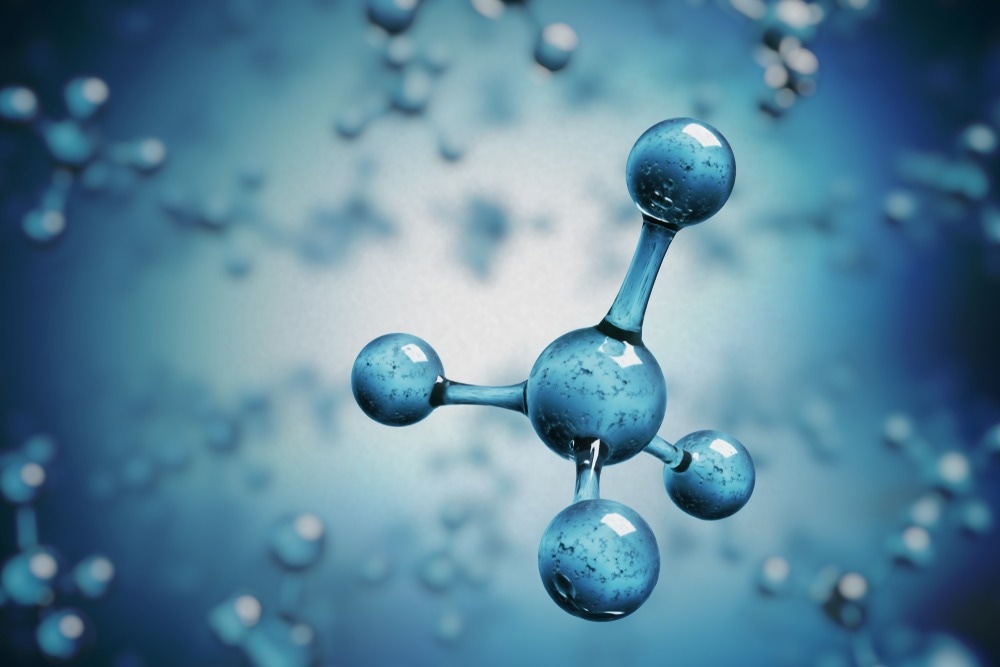Carbon capture technologies have been advancing steadily, but the challenge of finding effective uses for captured carbon remains.

Image Credit: vchal/Shutterstock.com
Researchers at Rice University, led by materials scientist Pulickel Ajayan, have made progress in this area by developing a method to extract carbon from carbon dioxide and bind it to hydrogen atoms, resulting in the formation of methane.
Methane is a valuable resource used as both a fuel and an industrial feedstock. Their innovative approach, outlined in a study published in Advanced Materials, relies on electrolysis and specialized catalysts created by attaching individual copper atoms to two-dimensional polymer templates.
Electricity-driven carbon dioxide conversion can produce a large array of industrial fuels and feedstocks via different pathways. However, carbon dioxide-to-methane conversion involves an eight-step pathway that raises significant challenges for selective and energy-efficient methane production. Overcoming such issues can help close the artificial carbon cycle at meaningful scales, and the development of efficient and affordable catalysts is a key step toward achieving this goal.
Soumyabrata Roy, Study Lead Author and Research Scientist, Rice University
These polymer templates are constructed with a pattern of alternating carbon and nitrogen atoms, creating minuscule pores that can accommodate copper atoms at different intervals.
The catalysts are formed at room temperature within a water-based solution, where the copper atoms displace the host metal ions within the polymer templates. In reactor tests, these catalysts demonstrated their capability to convert carbon dioxide into methane within one section of the cell, while simultaneously generating oxygen from water in the other portion of the cell.
We found that modulating the distances between the copper atoms lowered the energy needed for key reaction steps, thereby speeding up the chemical conversion. This cooperative action of nearby copper atoms helped produce methane at a very high rate of selectivity and efficiency.
Soumyabrata Roy, Study Lead Author and Research Scientist, Rice University
The catalysts created by Roy and the research team have achieved an impressive milestone, showcasing one of the swiftest and most efficient electrolysis-based methods for converting carbon dioxide into methane. This breakthrough not only contributes to the fundamental understanding of the process but also significantly enhances its performance capabilities, marking a significant step forward in carbon dioxide conversion technology.
If system-level energy and carbon conversion efficiencies can be addressed, inexpensive and efficient materials like these will help catalyze the industrial translation of electrochemical carbon dioxide reduction technology.
Jingjie Wu, Associate Professor, Chemical and Environmental Engineering, University of Cincinnati
Ajayan, Rice’s Benjamin M. and Mary Greenwood Anderson Professor of Engineering and chair of the Department of Materials Science and NanoEngineering, adds that the “design and development of novel catalysts are central to the energy and sustainability challenges we face. Single-atom dispersed catalysts present an exciting approach in this effort.”
Wu and Chandra Veer Singh, a Professor specializing in Materials Science and Engineering at the University of Toronto, played pivotal roles as key contributors to the study.
The study was funded by the US Air Force Office of Scientific Research and Clarkson Aerospace Corporation (FA9550-21-1-0460), the Alexander von Humboldt Foundation, a Marie Skłodowska-Curie Fellowship H2020-MSCA-IF-2019 (896637), the Max Planck Society, Brazil’s National Council for Scientific and Technological Development (405752/2022-9, 403064/2021-0) and the State of São Paulo Research Foundation (2020/14741-6, 2021/11162-8).
Journal Reference:
Roy, S., et al. (2023). Cooperative Copper Single Atom Catalyst in Two‐dimensional Carbon Nitride for Enhanced CO2 Electrolysis to Methane. Advanced Materials. doi.org/10.1002/adma.202300713.